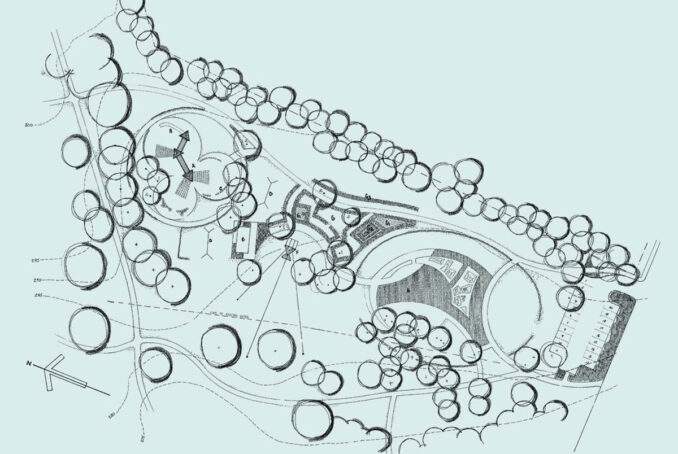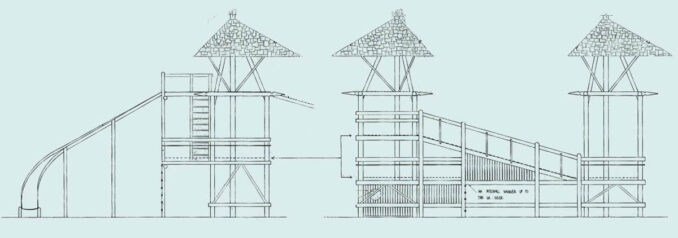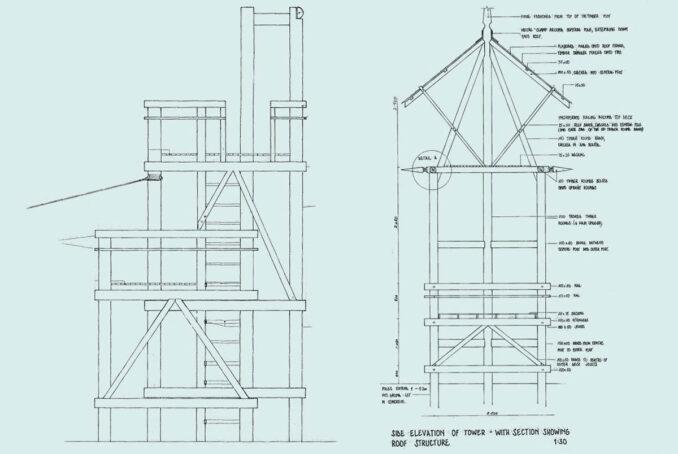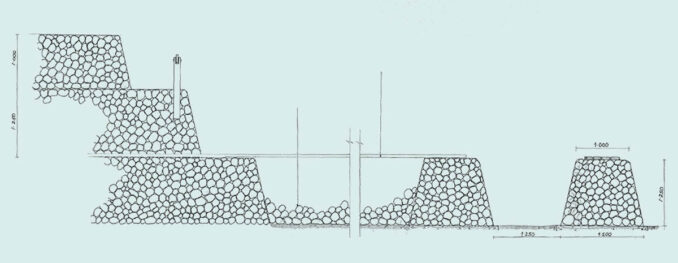
A hand-drawn design for a play space in Harcourt Park, Upper Hutt, is one of the two oldest documents in Boffa Miskell’s digital archive.
In 1976, the company (Boffa Jackman & Associates) was just four years old; and Sarah Collins was then Sarah de Lambert, a student at Lincoln University. She graduated two years later and, over the next forty-plus years, would become one of New Zealand’s most prolific and respected designers of children’s play spaces. Now a Fellow of the NZILA, and a partner at Boffa Miskell, she has designed nearly 100 play spaces for kindergartens, primary and secondary schools, and public parks and reserves across the country.
There are parts of the plan for Harcourt Park playground that would be non-compliant today, as the plan pre-dates play structures and surfacing standards, Sarah says.
“But there are so many things that are just fantastic about this play space design – and those are the aspects that I consider to be the value that a landscape architect brings to these projects,” Sarah says. “And which, since that time, we have fought to be able to bring to the design of play spaces.

“As landscape architects, we start with the place, and we respond to the opportunities of the environs, and this early plan does just that,” she continues. “There is good circulation and connection: the carpark, paths linking to the play space, and it appears to be linking to the path walking network. Too often play spaces become an arrangement of play equipment unpacked from a supplier’s box and dropped into an open space in the park.”
Sarah says the Harcourt Park play elements have been thoughtfully located within the area – waterplay is close to the carpark with good visibility for supervision, and this area also has places for sitting and socialising, which encourages caregivers to sit and observe, and become involved in the waterplay. The flying fox transitions through to a spot that’s positioned away from a ‘desire line’ – a likely route that children might run through and create a higher potential for accidents.
“The same consideration has been given to the positioning of the swings – and looks as though there are plenty, which is important,” she notes. “The swings are off to the side, in a spot where children run to them and not through them, which again would have a potential for collision.”
But some of what was possible and permissible in the late 1970’s wouldn’t pass today’s health and safety requirements.

“The rock maze is a good idea, and the description of the play opportunities is great; but it would not get built, as it’s described in this plan, today,” Sarah says. “It’s groyne-type construction – so hand and foot entrapments would be a risk, along with the hazard of tripping and falling on rocks of the heights shown… so no, it would not be possible to build this in 2023.”

There are no fall zone clearances shown as a requirement, because at that time these standards did not exist. Notably, the swings and flying fox are set with clearances. There are no safe fall surfaces, neither cushion-fall nor artificial, shown or specified – again, these were not required at the time of the design.
The Harcourt Park design doesn’t indicate where the swings come from, so Sarah thinks they were likely sourced from a play equipment supplier of the time. The towers are custom-designed by a member of the Boffa Jackman team.
“I’m not sure how it was done in 1976, but today we would work with an equipment supplier and their engineers would have done all calculations and they would also sign-off for safety and compliance,” Sarah explains. “The handrails on these towers are horizontal and completely climbable, which isn’t permitted. It’s non-compliant with NZS 5828: 2015.
“The standards we work to today aren’t about ‘wrapping children in cotton wool’, we’re hoping to eliminate possible head trauma from high falls onto hard surfaces; or potential strangulation if a child’s shirt or hoodie catches on a piece of the equipment,” she continues. “In the work we do, we aim to be as thoughtful as possible, while still creating age-appropriate challenges and those really important opportunities for learning and risk-taking through play.”
Images & Text: Boffa Miskell
